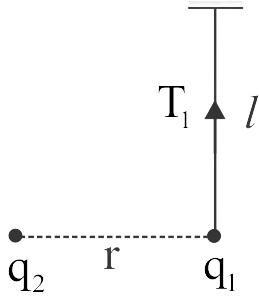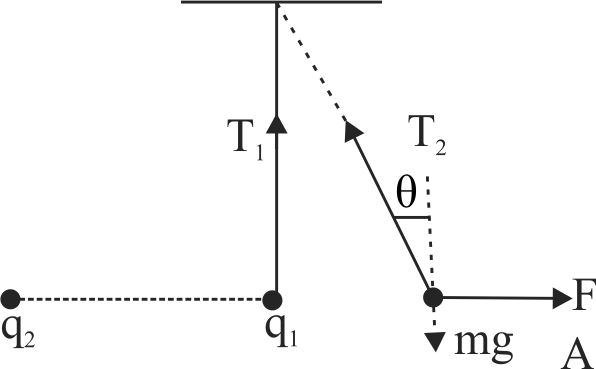358109 Two spherical conductors \(B\) and \(C\) having equal radii and carrying equal charges in them repel each other with a force \(F\) when kept apart at some distance. A third spherical conductor having same radius as that of \(B\) but uncharged is brought in contact with \(B\), then brought in contact with \(C\) and finally removed away from both. The new force of repulsion between \(B\) and \(C\) is
358111 The force of repulsion between two identical positive charges when kept with a separation \(r\) in air is \(F\). Half the gap between the two charges is filled by a dielectic slab of dielectric constant 16.Then the new force of repulsion between those two charges becomes
358109 Two spherical conductors \(B\) and \(C\) having equal radii and carrying equal charges in them repel each other with a force \(F\) when kept apart at some distance. A third spherical conductor having same radius as that of \(B\) but uncharged is brought in contact with \(B\), then brought in contact with \(C\) and finally removed away from both. The new force of repulsion between \(B\) and \(C\) is
358111 The force of repulsion between two identical positive charges when kept with a separation \(r\) in air is \(F\). Half the gap between the two charges is filled by a dielectic slab of dielectric constant 16.Then the new force of repulsion between those two charges becomes
358109 Two spherical conductors \(B\) and \(C\) having equal radii and carrying equal charges in them repel each other with a force \(F\) when kept apart at some distance. A third spherical conductor having same radius as that of \(B\) but uncharged is brought in contact with \(B\), then brought in contact with \(C\) and finally removed away from both. The new force of repulsion between \(B\) and \(C\) is
358111 The force of repulsion between two identical positive charges when kept with a separation \(r\) in air is \(F\). Half the gap between the two charges is filled by a dielectic slab of dielectric constant 16.Then the new force of repulsion between those two charges becomes
358109 Two spherical conductors \(B\) and \(C\) having equal radii and carrying equal charges in them repel each other with a force \(F\) when kept apart at some distance. A third spherical conductor having same radius as that of \(B\) but uncharged is brought in contact with \(B\), then brought in contact with \(C\) and finally removed away from both. The new force of repulsion between \(B\) and \(C\) is
358111 The force of repulsion between two identical positive charges when kept with a separation \(r\) in air is \(F\). Half the gap between the two charges is filled by a dielectic slab of dielectric constant 16.Then the new force of repulsion between those two charges becomes


